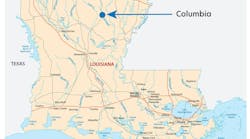The Federal Reserve Bank of Kansas City's first-quarter energy survey for this year revealed continued solid growth in energy activity in the Tenth District. The outlook for future activity also remained solid.
The Kansas City Fed's quarterly energy survey monitors oil and natural gas-related firms located or headquartered in the Tenth District, with results based on total firm activity. The district encompasses the western third of Missouri; all of Kansas, Colorado, Nebraska, Oklahoma and Wyoming; and the northern half of New Mexico.
"Firms' average profitable oil price remained just above $50/bbl last quarter, supporting a continued increase in drilling," said Chad Wilkerson, Oklahoma City branch executive and economist at the Kansas City Fed. "Several contacts expressed concerns about labor shortages limiting near-term growth, but firms overall expected further solid expansion in the months ahead."
This first quarter survey ran from Mar. 15-31 and included 33 responses from firms. In its quarterly energy survey, the bank reports results as diffusion indexes, calculated as the percentage of respondents indicating increases minus the percentage of respondents indicating decreases.
According to the survey, most indexes remained near their high readings of fourth-quarter 2016. Compared with fourth-quarter 2016, the drilling and business activity index eased to 55 from 64 but was still the second-highest reading since the survey began 3 years ago. The total revenues index fell to 52, and the indexes for employee hours and wages and benefits also moderated slightly. The access to credit and employment indexes edged higher, and the supplier delivery time index turned positive for the first time since third-quarter 2015.
On a year-over-year basis, indexes continued to improve. The revenues, profits, and capital spending indexes increased notably while the drilling and business activity and employment indexes rose only modestly. The supplier delivery time index also increased but remained negative. The access to credit index jumped into positive territory for the first time since third-quarter 2014. In contrast, the employee hours and wages and benefits indexes fell somewhat.
Most future expectations indexes declined but remained solid. The future drilling and business activity index decreased to 57 from 73, and the future revenues and total profits indexes were also moderately lower. The future capital spending index declined to 37 from 79, and the access to credit index fell to zero.
The expected oil prices index fell to 3 from 72, meaning most respondents expected oil prices to remain near current levels in the coming months. The NGL price and gas prices indexes also fell considerably but remained above zero.
Firms were asked what oil and gas prices were needed to be profitable in the areas in which they were active. The average oil price needed was $51/bbl, with a range of $35-70/bbl. This was slightly lower than the $53 average in third-quarter 2016, and the same as the average in first-quarter 2016. The average gas price needed was $3.38/MMbtu, with responses ranging $2.50-4.50/MMbtu.
Special questions
Firms also were asked what they expected oil and gas prices to be in 6 months, 1 year, 2 years, and 5 years. The average expected West Texas Intermediate prices for these periods, respectively, were $51/bbl, $54/bbl, $60/bbl, and $69/bbl. Firms overall expected global oil demand to keep rising and eventually overtake global supply, although price expectations varied considerably.
The average expected Henry Hub gas prices for these periods were $2.85/MMbtu, $3.01/MMbtu, $3.22/MMbtu, and $3.64/MMbtu, respectively. Large supply availability, particularly from the Marcellus play, was cited as the main factor driving gas prices.
Firms were asked how oil field service costs have changed since last year's first quarter. The majority of firms reported slight increases in costs since last year. Some firms expected costs to keep rising through the summer, particularly for well completion services.
Firms also were asked if they were concerned about labor or physical capital shortages limiting near-term growth in activity. More than 40% of respondents reported having no concerns. However, more than one third of firms reported concerns about labor shortages. Several respondents said many laid-off experienced workers were not returning, so they will have to train new employees.
Firms were questioned about their hedging activity as well. Slightly more firms had increased hedging since 2014 than had decreased it. Hedging firms had on average hedged 66% of oil production for 2017 and 41% for 2018, and had hedged 59% of gas production for 2017 and 25% for 2018.

